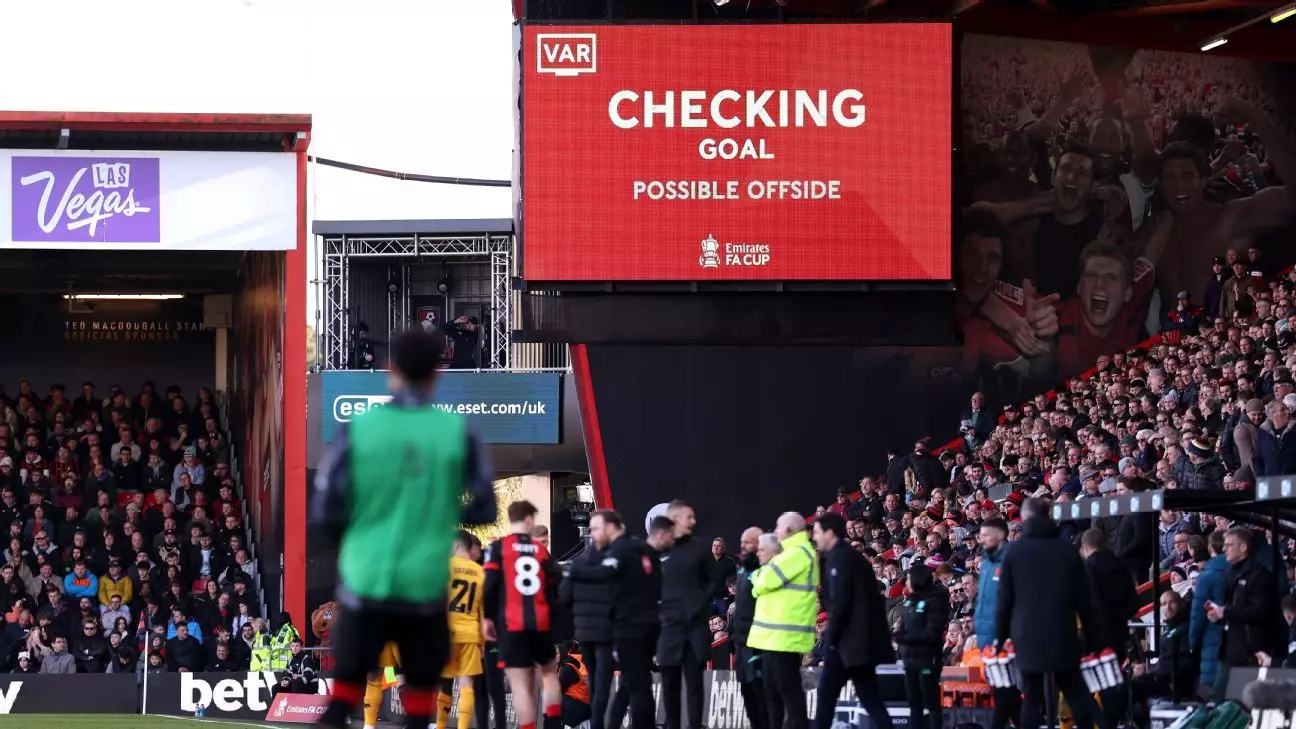The ongoing evolution of football technology continues to stir debate and anticipation among fans, officials, and players alike. Premier League referees’ chief Howard Webb has proposed a bold vision: extending the use of Video Assistant Referee (VAR) beyond its current scope. As the game adapts to a modern era where precision and fairness are paramount, the potential integration of VAR into reviewing yellow cards and corners signifies a transformative shift. Such enhancements could redefine the layers of fairness in football, emphasizing accuracy over tradition. However, this proposal is not merely about technology but about trust and the integrity of the sport.
Broadening VAR’s responsibilities entails a nuanced challenge—deciding where technology can serve as a true benefactor rather than an overreach. Webb’s openness indicates a recognition that football is dynamic, and the rules governing it must be equally adaptable. The idea is compelling: would it be beneficial to correct incorrectly issued yellow cards or overturn faulty corner decisions with the aid of video review? These are small but impactful changes that could elevate the game’s fairness, yet they also demand careful calibration to avoid over-reliance on technology at the expense of human judgment. Still, the principle remains clear: in an era where video evidence can quickly reveal errors, football must embrace this potential to safeguard the sport’s credibility.
Challenges and Controversies Surrounding VAR Expansion
Implementing extensions of VAR’s decision-making capabilities awakens legitimate concerns about consistency and overreach. Critics argue that expanding video reviews for complex situations might slow the flow of the game, turning fast-paced moments into cumbersome pauses. There’s also an inherent risk of over-politicizing decisions, where every minor incident is scrutinized, potentially undermining the authority of referees on the pitch.
Moreover, the controversy surrounding VAR’s current use in high-stakes moments reveals that technology is not infallible. Mistakes happen, and human judgment remains an essential aspect of football. Webb correctly emphasizes that errors like wrongly awarded corners or missed yellow cards have significant consequences, but this also begs the question—where is the line drawn? As the system grows more complex, the sport might risk losing its organic spontaneity if every decision becomes subject to technical review.
Furthermore, the discourse around encouraging transparency versus fostering a culture of blame reveals a deeper societal reflection. Webb’s acknowledgment of the abuse directed at officials highlights a pressing need for cultural change. As technology advances, so must respect for referees—who are often unfairly targeted despite their vital roles. Implementing new VAR features must be paired with a commitment to fostering respect and protecting officials from the toxic backlash that still plagues modern football.
Repercussions for Referees and the Culture of Accountability
Behind the technological advancements, the human element remains paramount. Webb’s candid discussion about officials facing abuse underscores an uncomfortable truth—technology alone cannot rectify the deep-rooted societal issues that manifest in football. The toxic treatment of referees like Michael Oliver and Anthony Taylor signals a broader societal challenge: the erosion of respect and civility.
The case of David Coote, who was dismissed for misconduct and barred from returning, exemplifies the complex morality and accountability issues faced by referees. Webb’s acknowledgment that Coote is unlikely to return to top-tier officiating illustrates a zero-tolerance approach to misconduct but also raises questions about the pathways for rehabilitation and the culture of accountability within the sport.
Ultimately, the future of VAR depends not just on how technology is deployed but also on how football cultivates respect for its officials. As the sport evolves, fostering a culture of integrity, accountability, and mental resilience becomes as crucial as the technological tools at hand. The game must strike a delicate balance: leveraging innovation to improve fairness while upholding the dignity and safety of those who steward the game on the pitch.

